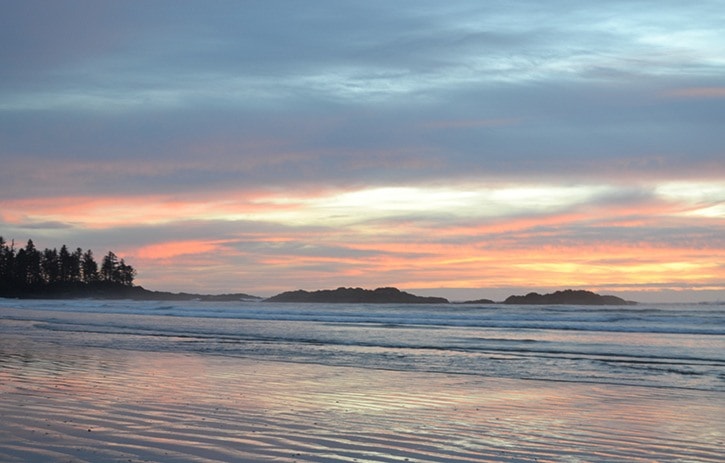The Pacific Rim National Park Reserve’s federally-funded $17.7 million Pacific Traverse Trail is officially underway.
Construction on the five metre wide, roughly 25-kilometre, asphalt trail that will span the Park Reserve’s north and south borders kicked off on Feb. 14.
“The new multi-use trail will be a year round attraction,” Park Superintendent Karen Haugen told the Westerly News. “It’s going to allow our visitors to experience the park in all seasons, boosting local tourism especially aiming towards the shoulder season and it also promotes a more environmentally friendly, healthy and safe way for people to visit and travel through our wonderful Park Reserve.”
She said the timeline for the trail’s completion is still being worked out and that the crews will need to halt work from March-August to avoid disrupting the West Coast’s leg of the shorebird migration.
"We can’t take trees down when they’re nesting,” she said. “We have to complete as much as we can by March 13 and then we stop construction to allow the birds to have their season too.”
She said crews would likely be working into 2018 to finish the trail, which will meander as far as 20 metres and as close as three metres from the highway, with guardrails in place to protect users from traffic along highway-adjacent portions.
“It’s going to connect all of our communities. We’ll all be able to easily get around and get around safely...It will connect us in ways we haven’t been before,” she said.
“We also have the ability to connect visitors to parts of the park that nobody really sees. They get a chance to see the forest. They get a chance to get to the beaches easily without having to drive a car and with limited parking within the park this offers an ability for visitors in the region to come that are busing in.”
She suggested as many as 1,000 trees could be cut down to make room for the trail, but assured the Park Reserve went through “a rigorous development review and environmental assessment process” to ensure “the Park’s ecology and integrity was well maintained.”
“We’re really working around limiting the amount of trees that come out,” she said adding the trail’s construction methods are designed to decrease disruption as well.
“There’s a very limited amount of actual machinery going in...We’re still working on all of that mitigation, but right now, contractors are going to be using techniques that are almost all either hand-based or smaller machinery.”
She added the trail was rerouted from its original design to mitigate its impacts.
“There are areas where we know we just can’t go farther in for either wildlife mitigation, environmental mitigation, or for design,” she said. “The original route went way into the bush, it went into the forest quite heavily.”
She said a combination of culverts and raised pathways will be added to ensure the Park’s amphibians and other animals can cross underneath and work was done to minimize the amount of wildlife corridors the path crosses.
“We knew wildlife was a concern. When we went through making the final route we had that top of mind,” she said adding signage will be installed and staff in place to educate visitors on wildlife.
She said a Gold Mine Loop that was part of the original design has been removed.
“That area has a lot of sensitivities to it, both from an archaeological standpoint and also from an environmental standpoint,” she said. We want to ensure that, if we do anything, we do it right and we don’t have the time, we feel, to actually do justice to ensure that we make the right decisions in that area.”
She added the loop could be revisited and that the Park hopes to form a working group to investigate various potential path projects throughout the Park.
“It may be those trails are not bike path trails, maybe they’re just walking trails, but these are questions and we all need to have further time to analyze those,” she said.
Haugen said that, while the Gold Mine Loop is off the table, there are other breathtaking views for Traverse Trail-users to enjoy.
“It’s still going to go in and out of the forest and down to the beaches,” she said. “We’re bringing the trail right down to Wick Beach as well.”
She said work is being done to ensure the trail’s cyclists and pedestrians can co-exist.
“We’re still in the process of looking at all of that and developing a strategic plan that’s going to look at the whole user group,” she said. “We have to make sure that everything we’re doing, message wise, signage wise, the crossing paths and all of that, is clearly outlined and educated and that we’re getting out there, informing people of how to be safe on the trail.”
She added the Park hopes to avoid any area closures and traffic disruptions while the work is underway.
“We will be making every effort to minimize disruptions caused by this work for our visitors and our locals,” she said. “Because the trail route is largely away from the road, there should be very little overall impact to visitors and locals driving through.”
